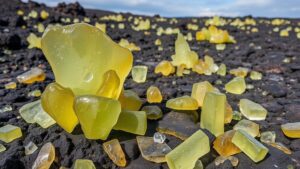Following trails of sunken treasure ships rumored in privateers’ logs.
Following Trails of Sunken Treasure Ships Rumored in Privateers Logs
The concept of treasure hunting has tantalized adventurers for centuries, often leading them to explore dangerous waters and forgotten histories. Sunken treasure ships, particularly those documented in privateers logs, offer intriguing tales of plunder and loss. This article delves into the world of these ships, examining notable examples, the relevance of privateers, and the modern-day implications of such pursuits.
The Role of Privateers in Maritime History
Privateers were commissioned by governments to attack enemy vessels during wartime. operated under a Letter of Marque, which granted them legal permission to plunder. This practice became prominent during the 16th to early 19th centuries, especially in maritime conflicts involving European powers.
Notable examples include:
- Sir Francis Drake: One of the most famous privateers, Drake was sanctioned by Queen Elizabeth I to attack Spanish ships, plundering immense wealth during his expeditions.
- Captain Henry Morgan: Known for his raids in the Caribbean, Morgans exploits led to significant treasure accumulation, much of which remains undiscovered.
Documented Treasure Shipwrecks
Many treasure ships are chronicled in privateers logs, detailing routes, cargo, and fates. Several notable shipwrecks provide prime exploration targets for modern treasure hunters:
- The Nuestra Señora de Atocha: Sunk in 1622 off the Florida Keys, the Atocha was laden with gold, silver, and precious jewels. It wasnt until 1985 that treasure hunter Mel Fisher discovered approximately $450 million worth of artifacts and treasure.
- The San José: This Spanish galleon sank near the coast of Cartagena, Colombia, in 1708. It reportedly carried a vast fortune in gold and silver. The wreck was found in 2015, reigniting interest in treasure recovery.
A Step-by-Step Guide for Modern Treasure Hunters
For aspiring treasure hunters interested in following in the footsteps of the past, heres a structured approach:
- Research Historical Records: Delve into archives, examining privateers logs, government documents, and maritime records to identify potential shipwreck sites.
- Understand Local Laws: Treasure hunting is subject to international maritime laws and local regulations. Before embarking, ensure compliance to avoid legal complications.
- Use Technology: Employ advanced technologies such as sonar mapping and underwater drones to locate potential wreck sites accurately.
- Assemble a Qualified Team: Include marine archaeologists, divers, and historians to enhance the chance of recovery while preserving historical integrity.
- Plan for Conservation: Prepare to recover and conserve artifacts responsibly, ensuring their historical significance is maintained.
Challenges in Treasure Hunting
While the allure of treasure hunting is immense, it comes with significant challenges. Potential concerns include:
- Environmental Impact: Disturbing underwater sites can damage delicate ecosystems. Responsible treasure hunting should prioritize environmental protection.
- Ownership Disputes: The legality of treasure recovery is often contested, leading to disputes over ownership between finders and government entities.
- High Investment with No Guarantee: Many treasure-hunting expeditions require substantial financial investment with uncertain returns.
Real-World Applications and Conclusion
Exploring sunken treasure ships documented in privateers logs serves not just as an adventurous pursuit but also as a means to learn about maritime history and cultural heritage. Each expedition contributes to a deeper understanding of the past, often leading to significant historical discoveries along the way.
For anyone intrigued by the possibility of treasure beneath the waves, the stories of privateers and their navigational logs provide an alluring path worth pursuing. By combining historical research with modern technology and a commitment to responsibility, treasure hunters can uncover the echoes of history that still lie buried in our oceans.



